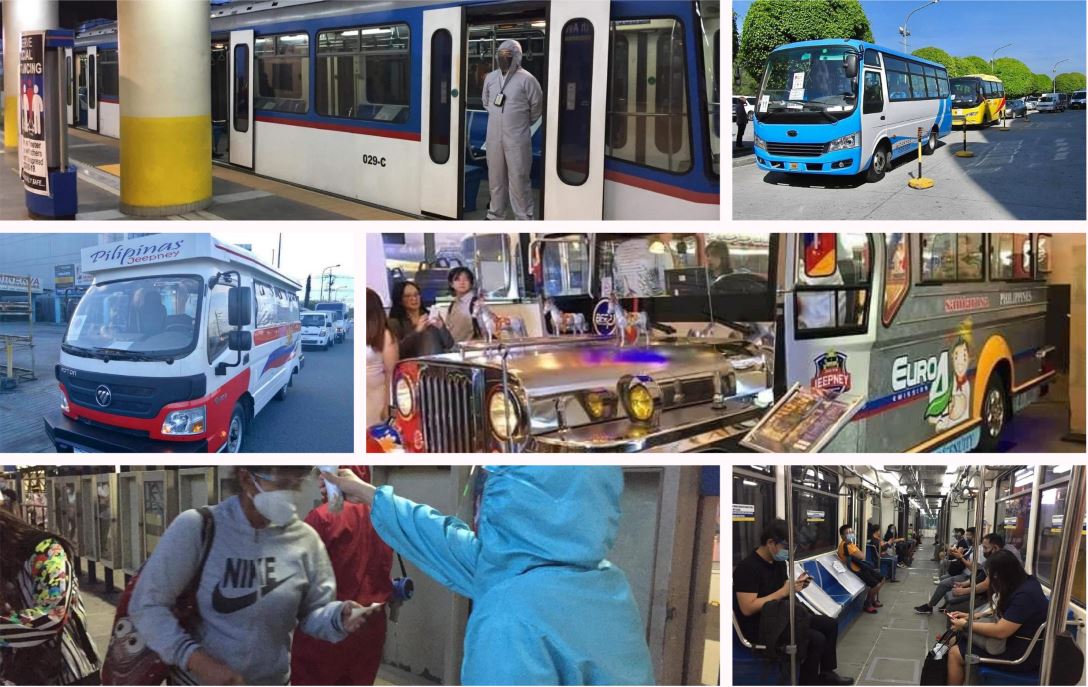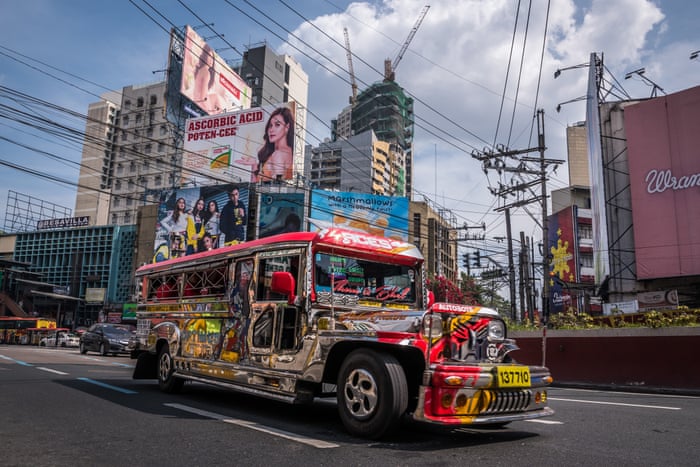Make Best Use Of Exposure with Transit Advertising Philippines
Make Best Use Of Exposure with Transit Advertising Philippines
Blog Article
Recognizing the Role of Transportation Marketing in Enhancing Brand Name Exposure and Customer Involvement
Transit advertising has arised as a critical element in the advertising and marketing landscape, supplying special possibilities for brands to boost their exposure and engage consumers efficiently. With the capacity to reach a varied and restricted audience during their daily commutes, these advertising methods are not just concerning visibility; they have to do with creating meaningful links with possible customers. As we discover the complex benefits and ingenious approaches within transportation advertising and marketing, it ends up being important to consider just how these elements collectively affect consumer perception and behavior, questioning concerning their long-lasting effect on brand name commitment.
Meaning of Transit Advertising
Transportation marketing describes the method of advertising items, services, or brands via ads placed around public transport systems. This kind of advertising and marketing encompasses a selection of placements, including posters on trains and buses, digital screens at transportation terminals, and wraps on the outside of vehicles. It aims to get to a diverse target market, taking advantage of the high foot web traffic related to public transit.
Transportation marketing is purposefully positioned to capture the attention of commuters, that commonly spend significant time taking a trip or waiting. By integrating ads into the daily routines of individuals, brands can develop a long lasting impact and foster brand acknowledgment. The tool is especially efficient in city settings, where public transportation is a main mode of travel.
Additionally, transit advertising and marketing can facilitate local targeting, permitting businesses to reach specific demographics based on transportation paths and station areas. As urban populations expand and using public transport boosts, this advertising approach has actually gotten importance as a vital part of incorporated advertising techniques. The dynamic nature of transportation marketing, combined with its ability to engage customers in a restricted environment, emphasizes its significance in contemporary advertising and marketing practices.
Advantages of Transportation Marketing
The performance of transportation advertising lies in its ability to deliver a wide range of advantages to brands looking for to enhance exposure and interaction. One of the main benefits is the comprehensive reach it offers; transportation ads can efficiently target diverse demographics throughout metropolitan areas, reaching both commuters and pedestrians alike. This wide direct exposure significantly enhances brand awareness.
One more advantage is the high regularity of impressions. As transportation vehicles follow well established paths and stop at several locations, they produce repeated exposure that strengthens brand name messages. This frequency promotes knowledge, which is vital in consumer decision-making.
Transportation marketing is likewise cost-efficient contrasted to other media platforms. Offered its expansive reach and possibility for high impressions, brand names frequently experience a reduced cost per thousand perceptions (CPM), optimizing their advertising spending plan.
Additionally, transit ads can create a sense of area connection. By lining up with neighborhood transit systems, brand names can resonate with local audiences and cultivate a sense of regional satisfaction. This local approach boosts brand commitment and engagement, making transportation advertising and marketing a compelling option for organizations aiming to strengthen their presence in the market.

Reliable Techniques for Transit Projects
To make the most of the influence of transit projects, brands must take advantage of calculated planning and execution customized to their target market. Initially, identifying the group features of the target market using public transit is essential. This allows brands to use this link create personalized messaging that reverberates with potential consumers.
Next, picking the right transit tools is important. Whether making use of bus covers, metro posters, or digital screens, each tool has special advantages that can enhance visibility. As an example, lively visuals on bus wraps can draw in attention, while electronic ads can be upgraded regularly to reflect timely promos.
In addition, incorporating a natural branding method throughout transportation systems ensures uniformity and enhances the brand name's identity. Making use of unforgettable taglines and eye-catching designs will certainly reinforce brand recall amongst travelers.
Lastly, timing is a key factor in executing successful transit projects. Launching campaigns during top traveling hours or neighborhood events can dramatically boost exposure and engagement. By utilizing these strategies, brands can effectively harness the capacity of transit advertising and marketing, promoting higher understanding and connection with their target audience. Ultimately, a well-executed transportation project click for more can drive significant growth in brand presence and consumer interaction.

Gauging Influence and Interaction
In reviewing the performance of transit advertising projects, exact dimension of effect and interaction is essential for brands seeking to enhance their marketing approaches. Metrics such as reach, regularity, and impacts offer fundamental data to evaluate visibility. Assessing these factors aids determine the amount of possible clients are subjected to the advertisements during their day-to-day commutes.
Involvement can be further gauged with consumer communications, such as web site traffic, social networks mentions, and direct actions to calls-to-action included in the ads. Utilizing tools like QR codes or special URLs can help with monitoring of consumer behavior directly linked to transit campaigns. Studies and feedback devices additionally serve as beneficial methods to gather qualitative data on consumer assumptions and recall of the advertisement.
In addition, progressed analytics and acknowledgment designs can correlate transportation exposure with succeeding getting behavior, using understandings right into the return on investment. By using a detailed method that incorporates measurable and qualitative procedures, brand names can create a nuanced understanding of their transit advertising impact. Inevitably, this data-driven technique makes it possible for brand names to fine-tune their campaigns, ensuring they resonate efficiently with target market and boost total brand exposure.
Study of Successful Projects
Successful transit marketing campaign work as engaging instances of exactly how effective strategies can raise brand name visibility and engagement. Transit Advertising Philippines. One notable situation is the "I Love New york city" campaign, which changed the city's photo and drew in numerous visitors. By utilizing metro ads, billboards, and bus wraps, the project created a solid, natural brand anonymous name identity, causing a substantial uptick in tourist and regional business patronage
An additional exemplary project is Coca-Cola's "Share a Coke" campaign, which leveraged transit advertising and marketing to customize the brand experience. By featuring popular names on promotional materials throughout different transit platforms, Coca-Cola cultivated a deeper emotional link with consumers, motivating them to share their experiences on social media.
Furthermore, the "Got Milk?" campaign efficiently used public transport advertisements to get to a wide audience, enhancing the message of the importance of milk in a balanced diet plan. The campaign saw a measurable rise in milk consumption in target demographics.
These situation researches illustrate that when executed thoughtfully, transit advertising can dramatically boost brand presence, foster consumer interaction, and drive quantifiable results, showing its crucial duty in modern-day marketing approaches. - Transit Advertising Philippines
Conclusion
To conclude, transit marketing acts as an essential tool for boosting brand exposure and fostering customer engagement. By using tactically positioned promotions within mass transit systems, brands can efficiently get to varied audiences and strengthen acknowledgment with constant exposure. The implementation of targeted messaging and ingenious strategies further magnifies the impact of transportation projects. Inevitably, the capacity to determine involvement and examine effective situation studies emphasizes the performance of transit advertising in driving brand commitment and customer interactions.
Transportation advertising has actually arised as a pivotal aspect in the marketing landscape, supplying one-of-a-kind chances for brand names to boost their visibility and involve customers successfully.Additionally, transit advertising and marketing can help with local targeting, enabling companies to reach particular demographics based on transportation paths and terminal areas.In reviewing the effectiveness of transportation advertising projects, accurate measurement of effect and involvement is essential for brands looking for to enhance their marketing approaches.Successful transportation marketing campaigns serve as compelling instances of exactly how efficient approaches can raise brand name presence and engagement.In verdict, transportation marketing serves as an important device for boosting brand name presence and cultivating consumer engagement.
Report this page